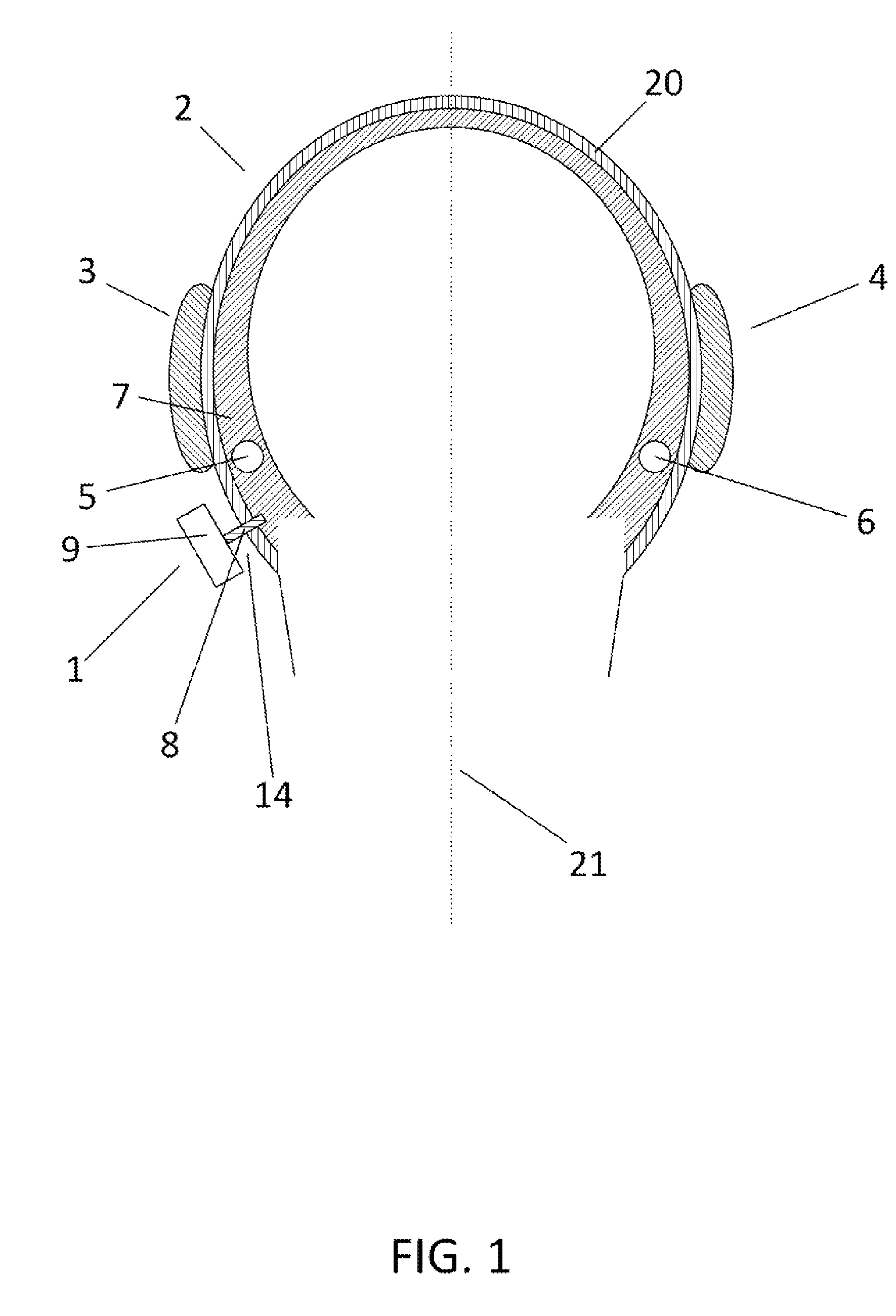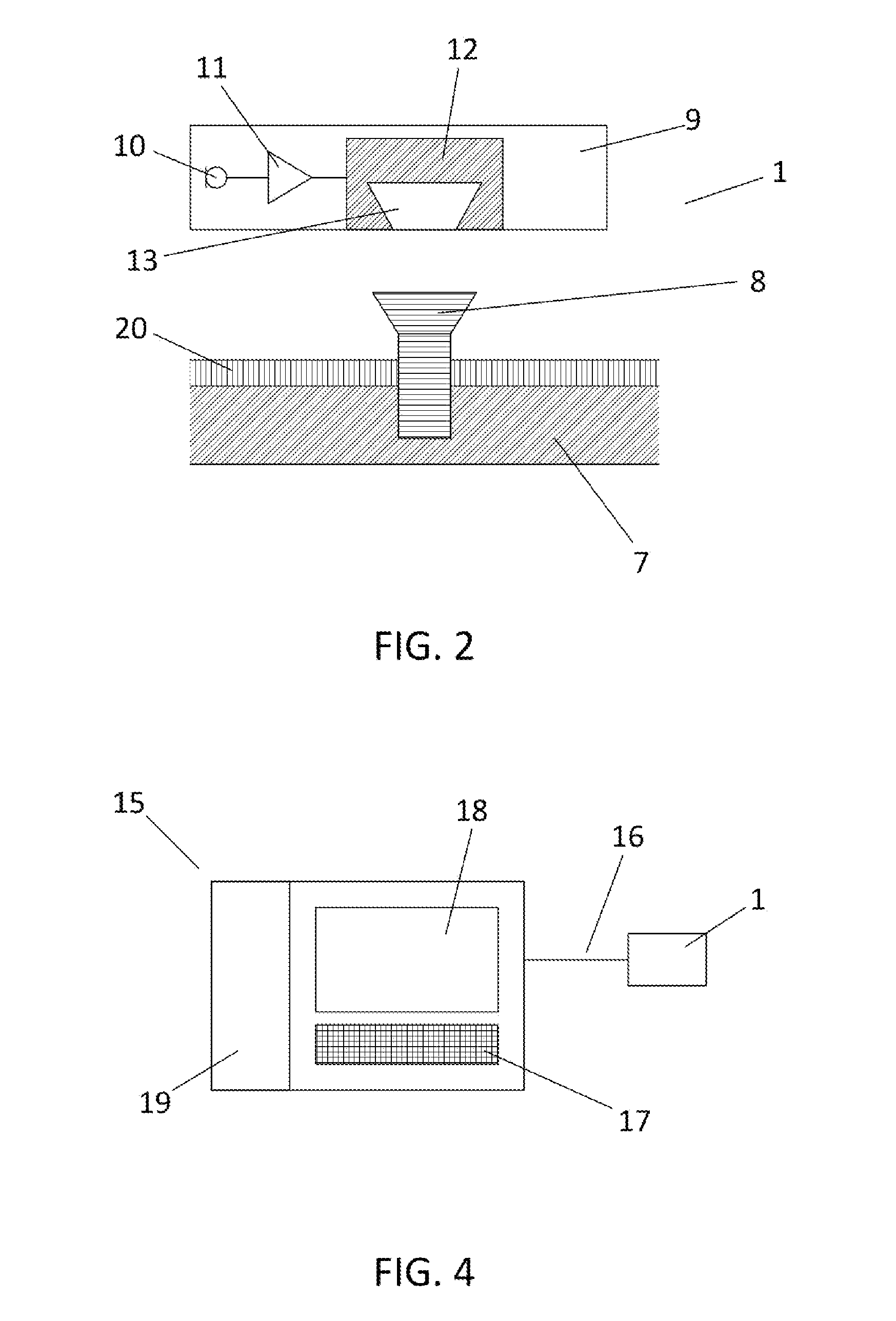Method of determining a gain setting of a bone-anchored hearing aid
a technology gain settings, which is applied in the direction of earpiece/earphone attachments, medical science, electrical equipment, etc., can solve the problems of bone-anchored hearing aids producing undesirably high sound levels in the good ear, adding to the cost and inconvenience of fitting a bone-anchored hearing aid, etc., to achieve fast and easy determination of transcranial attenuation and improve control of gain
- Summary
- Abstract
- Description
- Claims
- Application Information
AI Technical Summary
Benefits of technology
Problems solved by technology
Method used
Image
Examples
Embodiment Construction
[0037]In the present context, the term “bone-conduction hearing threshold” refers to a hearing threshold for sound signals or vibrations received through the bone structure, whereas the term “airborne hearing threshold” refers to a hearing threshold for airborne sound signals received through the outer ear. The terms are related in that an airborne hearing threshold for a particular ear depends on a corresponding bone-conduction hearing threshold for the same ear. The term “threshold” refers to a threshold for a single frequency or a single frequency band, unless expressly stated otherwise. The term “corresponding threshold” refers to a threshold for the same frequency as a previously mentioned threshold, level or frequency band. The term “uncomfortable level” refers to a level above which sounds will be perceived as uncomfortably loud. Furthermore, the term “normal” applied to a hearing threshold or a level refers to statistical mean values of the respective hearing threshold or le...
PUM
 Login to View More
Login to View More Abstract
Description
Claims
Application Information
 Login to View More
Login to View More - R&D
- Intellectual Property
- Life Sciences
- Materials
- Tech Scout
- Unparalleled Data Quality
- Higher Quality Content
- 60% Fewer Hallucinations
Browse by: Latest US Patents, China's latest patents, Technical Efficacy Thesaurus, Application Domain, Technology Topic, Popular Technical Reports.
© 2025 PatSnap. All rights reserved.Legal|Privacy policy|Modern Slavery Act Transparency Statement|Sitemap|About US| Contact US: help@patsnap.com



